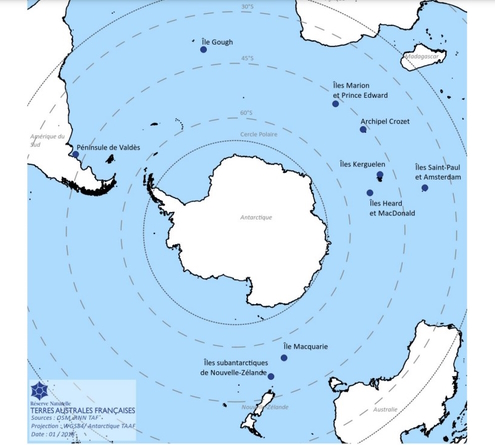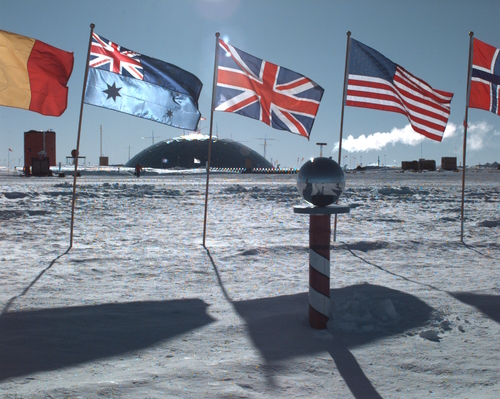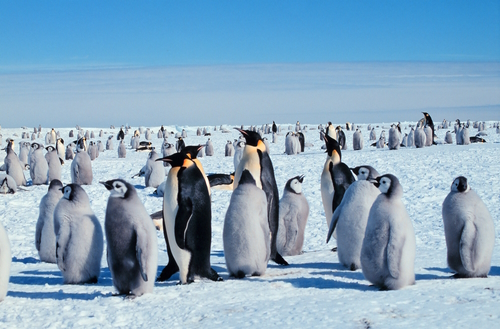Blog Books
Possible Antarctic WHS
Recently I bought a book called “Antarctica. A history in 100 objects.” I’d recommend it as a gift to every armchair traveller, especially when he or she doesn’t know much already about the subject. Get the hardcover version, it’s not expensive. It got me thinking about Antarctica and possible WHS. We’ve touched upon this subject before at the Forum on several occasions, such as the Top Missing 2008, Top 50 Missing 2020, and Jonas Bergmann’s Dream List.
Why are there no Antarctic World Heritage Sites yet?
This is because of the combined effects of two international treaties. According to UNESCO's World Heritage Convention, sites can only be brought forward by a country and should be on its territory. This has been determined in Article 3 and was further clarified with the Antarctica example in this decision from 1977. Although 7 countries claim portions of Antarctica as theirs (sometimes overlapping), these claims are not recognized by other countries outside of these 7. Also, a large part of Antarctica is unclaimed. All involved parties have since 1959 agreed to govern the continent as a scientific preserve by the Antarctic Treaty System.
What constitutes 'Antarctica'?
In this treaty, Antarctica is defined as all the land and ice shelves south of 60°S latitude. Countries did and do nominate sites within their control that are close by, in what is referred to as the Subantarctic (between 46° and 60° south). The map below (source: French Austral Lands nomination file) nicely shows the position of the various Subantarctic sites in relation to Antarctica:

However, all Subantarctic WHS are island groups, while the main distinguishing feature of Antarctica is its huge land and ice mass. It’s also much drier than the Subantarctic, and even more remote and inhospitable. Antarctica could surely bring a number of sites to the table that are globally unique and outstanding. All potential sites in the inventory below are south of 60°S latitude and thus located in Antarctica proper.
Cultural Sites
Although the book ‘Antarctica' focuses on moveable objects and a WHS should have tangible remains in situ, I found the following suggestions useable:
- Memorial Cross (Ross Island, claimed by New Zealand): Makeshift cross to remember the lives lost among Scott's companions.
- The base at the Pole of Inaccessibility (Kemp Land, claimed by Australia): the point in Antarctica furthest from any ocean, with its Lenin statue.
- Red Apple Hut and other remains of the World Park Base (Ross Island, claimed by New Zealand), the symbol of Greenpeace's costly efforts to ban mining in Antarctica (unsure if there are remains at all).
- Shipping Containers architecture: East Germany's Georg Forster Antarctic station (Queen Maud Land, claimed by Norway) was the first to be built from containers (1976). Probably dismantled.
- Ceremonial South Pole Marker (Antarctic Plateau, Ross Dependency, claimed by New Zealand): located some meters from the Geographic South Pole, and consists of a metallic sphere on a short barber pole, surrounded by the flags of the original Antarctic Treaty signatory states (see Photo 2).
- South Pole Telescope (Antarctic Plateau, Ross Dependency, claimed by New Zealand) "played a key role in capturing the first image of a supermassive black hole ... one of the greatest collaborative achievements in the history of astrophysics" ('Antarctica', item #81).
- Shackleton shipwreck (Weddell Sea, claimed by the UK, Chile, and Argentina): only rediscovered in 2022.
At the forum we earlier had identified:
- Sites of Antarctic Exploration (Ross Island, claimed by New Zealand): Scott and Shackleton's Huts, nothing of Amundsen remains.
- Ross Island (claimed by New Zealand): holds most of the huts above, as a mixed nomination.
- Deception Island (South Shetland Islands, claimed by the UK, Chile, and Argentina): an important early attempt at colonization and commercialization of Antarctica.
A cultural Antarctic WHS could fill gaps in the categories of (1) scientific developments (with positive use outside of Antarctica), (2) Heroic Age of Exploration (mentioned in ICOMOS' Filling the gaps as Exploration of the Arctic and Antarctic Regions), (3) peaceful international cooperation.

Natural Sites
The book leans more toward the cultural sites, but among the natural items featured are:
- Meteorite findings (unspecified location): they seem historically to have been taken out and shipped overseas; findings are still being made, as was in the news last week.
- First dinosaur fossils found in 1991 in Antarctica at Beardmore Glacier (Queen Maud Mountains, Ross Dependency, claimed by New Zealand), including a previously unknown species.
- Ice Core drilling sites such as Dome C (Antarctic Plateau, claimed by Australia): ice core samples make it possible to precisely reconstruct climate fluctuations up to a million years ago.
In earlier discussions, our community has come up with the following:
- Deception Island (mixed): includes a volcanic ridge and seamounts dating back to the Pleistocene and exhibits some wildly varying microclimates. Has the greatest number of rare plant species of any place in the Antarctic. It is also the first site in Antarctica where fossilized plants were discovered.
- Ross Island (mixed): The three massive peaks make this island the sixth highest in the world. Mt Erebus is the world's southernmost active volcano, there are also two other extinct volcanos on the island. This represents the southernmost point of the Pacific Ring of fire. Ross island supports the largest colony of Adelie Penguins
- MPA Ross Sea (claimed by New Zealand): for Antarctic marine eco-system.
- South Pole: for the Antarctic ice sheet and the conditions of humans living in an extreme environment.
- Breeding areas of the emperor penguin (unspecified location): largest animal breeding on the Antarctic ice sheet.
- Antarctic Dry Valleys (Victoria Land, Ross Dependency, claimed by New Zealand): the coldest and one of the driest deserts on earth creating a unique ecosystem and landscape.
- South Georgia Island (claimed by the UK and Argentina): most biologically diverse of all islands in the Southern Ocean. Significant geological, scenic and historical values.
And from other sources (IUGS Geoheritage, Wiki's Wildlife of Antarctica):
- Breeding grounds of the Emperor penguins (Photo 3), such as Cape Washington (Victoria Land, Ross Dependency, claimed by New Zealand).
- The Weddell Sea (claimed by the UK, Chile, and Argentina), with its seals (most notably the crabeater seals), icefish, and a large colony of Adelie penguins.
- Subglacial lakes, eg. Lake Whillans (Ross Ice Shelf, claimed by New Zealand). The Antarctic subglacial lakes contain about 15% of all liquid freshwater on Earth.
- Cretaceous-Paleogene transition at Seymour (Marambio) Island (Graham Land, claimed by Argentina, Chile and UK): we also discussed it when Stevns Klint was inscribed, as it was conveniently ranked second in the comparative analysis because it was less accessible. Undoubtedly it is the best example in the southern hemisphere.

Will there be Antarctic WHS in the future?
Overall there is plenty of potential for Antarctic WHS, maybe more so from a natural perspective than a cultural one. When the political will is present and enough supporting countries can be gathered, the procedural hurdles can be overcome by amending or temporarily suspending the rule about only nominating a site on its own territory. Only Australia sometimes seems to ponder nominating a site from within their Antarctic territorial claim, as it was mentioned in an article from 2012 and (with surprisingly few scruples) in a 2013 IUCN document on the Future of World Heritage in Australia ("an embarrassing gap in the global World Heritage system and with a claim to 42% of the continent Australia has the clear potential to be a leader in filling it."). A specific site was never mentioned, it seemed to be about Antarctica as a whole. However, the Antarctic Treaty System seems to function well and even has its own heritage list. It is likely that its non-claimant members (notably the USA) would block any attempt at nominating a site within the scope of the Treaty for the World Heritage List.
Els - 5 February 2023
Comments
Jay T 6 February 2023
Great topic -- I'd love to see both cultural and natural World Heritage Site nominations for Antarctica, should the procedural hurdles be resolved for inscription and management. Of the sites you mentioned, I think I'm most interested in Ross Island (with the sites of early Antarctic exploration), the Antarctic Dry Valleys, Deception Island, and the Ross Sea.